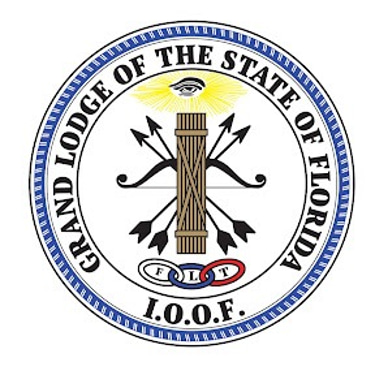This site is still a work in progress please be patient
How the Odd Fellows Began
In 17th Century England, people were facing a lot of challenges. Life was tough, often lawless and desperate. Medicine was still crude and in a primitive stage. Life expectancy was about 45 to 50. There were lots of sickness, orphaned kids, widowed mothers and many people cannot afford to pay a decent burial for the dead.
So, ordinary people from different trades and walks of life found it necessary to group together as brothers and sisters and contribute some of their hard-earned wages to a common fund which they could use for unfortunate times such as sickness, losing a job and even death. They would work together to help each other and the unfortunate families back on their feet, whether it was rebuilding a barn that had burned or putting in a new crop after a devastating season.
Such altruistic and friendly society came to be known as “Odd Fellows” because it was odd to find people organized for the purpose of giving aid to those in need and of pursuing projects for the benefit of all mankind. It was believed that they were “an odd bunch of fellows” who would behave in such a selfless and seemingly impractical fashion. Odd Fellows are also known as “The Three Link Fraternity” which stands for Friendship, Love and Truth.
The Independent Order of Odd Fellows was founded on the North American Continent in Baltimore, Maryland, on April 26, 1819, when Thomas Wildey and four members of the Order from England instituted Washington Lodge No. 1. This lodge received its charter from Manchester Unity of Odd Fellows in England. At that time, the city was suffering both a yellow fever epidemic and mass unemployment, so they dedicated the organization to “Visit the sick, relieve the distress, bury the dead and educate the orphans.”
Odd Fellowship became the 1st national fraternity to include both men and women when it adopted the beautiful Rebekah Degree on September 20, 1851. This degree is based on the teachings found in the Holy Bible and was written by the Honorable Schuyler Colfax who was Vice President of the United States during the period 1868-1873. Odd Fellows and Rebekahs were also the first fraternal organization to establish homes for our senior members and for orphaned children.
Today, Odd Fellows and Rebekahs continue to exist with nearly 10,000 lodges in approximately 26 countries consisting of men and women who united together for mutual aid and conviviality, providing social and practical support for each other and their communities in every way possible. Even though we have come a long way now, there are still more needs to be done. Working together to achieve these goals and help our fellow men creates a bond that cannot be described – a brotherhood and sisterhood of benevolence that can only be felt as an active participant. Working together, we can really help make a difference!
Information on this page was taken from The Sovereign Grand Lodge Independent Order of Odd Fellows website, and The Official History of Odd Fellowship; the Three Link Fraternity; published in 1914.
The History of Odd Fellows in Florida
Odd Fellowship came to the Territory of Florida in 1841 when Florida Lodge No. 1 was instituted, by a dispensation grated from Grand Sire, now known as the Sovereign Grand Master, Zenas B. Glazier.
The original lodge was located in Middleburg, Clay County, as it was the location Cotton growers sold and shipped their goods. However, in 1842 Jacksonville overtook the lead as it was better suited to shipping. Kennedy Lodge No. 2 was instituted in Black Creek on May 24, 1843. It closed sometime prior to 1851. The number would be re-issued to Union Lodge, No. 2, located in Waldo, Alachua County at some point in the future.
By 1851, seven lodges, Florida No.1, at Jacksonville; Jefferson No. 3, at Monticello; Pensacola, No. 4, at Pensacola; Leon No. 5, at Tallahassee; Franklin, No. 6, at Quincy; and Tampa, No. 7, at Tampa, were prospering in the State and a submitted a petition to Charter the Grand Lodge of Florida. On March 4, 1851, the Grand Marshal of the Grand Lodge of the United States presented the Charter to seven past Grands from Jefferson, Leon and Franklin lodges, constituting the Grand Lodge at its institution. The members were all elected to fill a position, B.W. Taylor was installed as the first Grand Master in Florida.
The first Spanish translation was brought to fruition through the work of Key West Lodge, No. 13 and Cuba Lodge, No. 15.
By 1894 the Jurisdiction of Florida reported thirty-seven lodges, a membership of 1248 members; receipts that year totaled $8911.80, and relief paid totaling $2519.47.
The Grand Lodge of Florida
Floridagrandsecretaryioof@gmail.com
656-800-1851
© 2024. All rights reserved.
The Sovereign Grand Lodge
